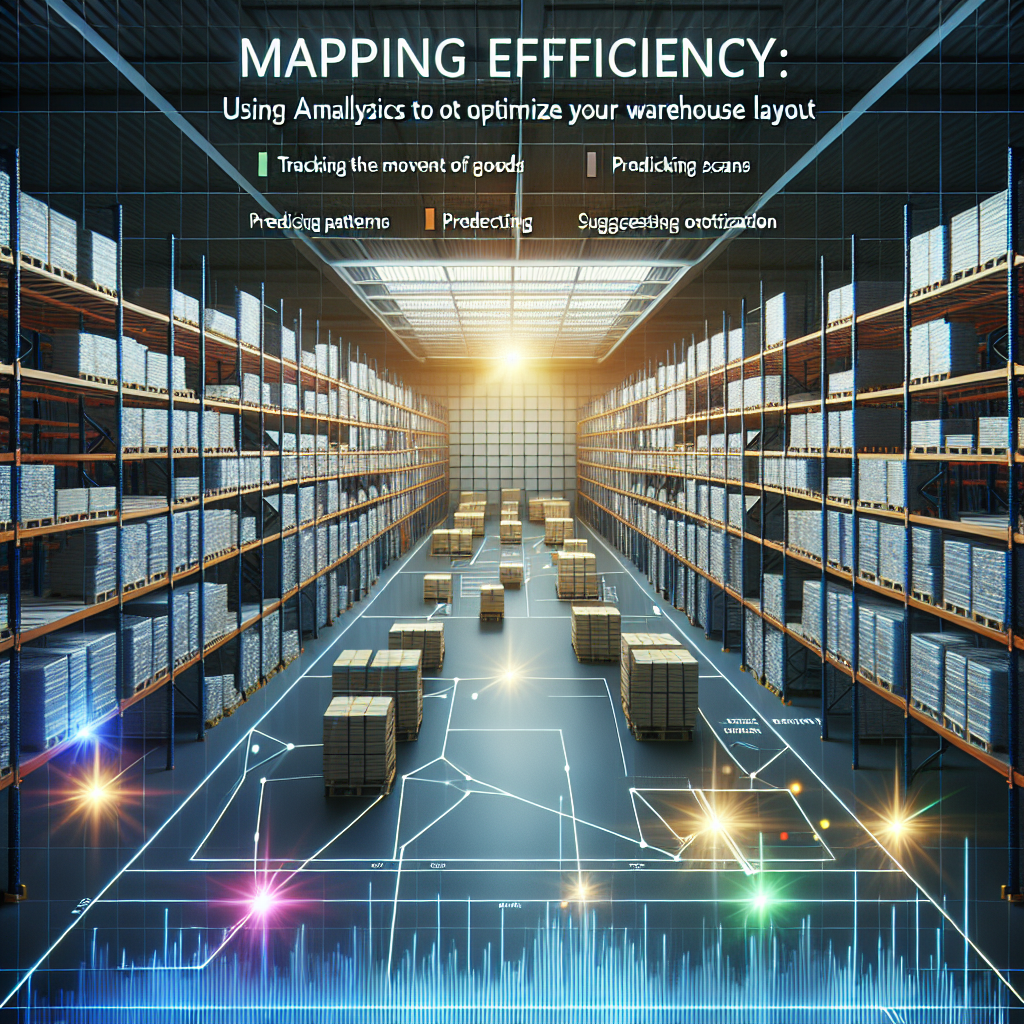In today’s fast-paced supply chain environment, the efficiency of your warehouse plays a pivotal role in your overall business performance. As consumer expectations rise and competition intensifies, understanding how to utilize analytics for optimizing your warehouse layout can spell the difference between success and stagnation. In this article, we’ll explore how mapping efficiency not only reduces operational costs but also enhances customer satisfaction.
The Importance of Warehouse Layout Optimization
Why Layout Matters
The layout of your warehouse is not just a matter of convenience; it’s a strategic advantage. An optimized layout can drastically reduce the time taken to pick, pack, and ship products, leading to quicker order fulfillment. Ultimately, this translates into happy customers and repeat business. Moreover, with rising costs associated with real estate, labor, and logistics, optimizing your warehouse layout can significantly impact your bottom line.
Understanding Warehouse Flow
Before diving into the analytics part, it’s essential to grasp the concept of warehouse flow. A well-designed flow minimizes unnecessary movement and maximizes efficiency. This involves defining zones for receiving, storing, picking, packing, and shipping. Mapping this flow based on actual data can drastically refine your operations.
Harnessing the Power of Analytics
Collecting Data for Actionable Insights
The first step in optimizing your warehouse layout through analytics is collecting relevant data. This can include inventory turnover rates, order pick frequencies, and travel time between locations. Tools such as warehouse management systems (WMS) can provide detailed reports that highlight inefficiencies in the current layout.
Using Heat Maps for Better Layout Decisions
Heat maps are invaluable for visualizing data patterns. By analyzing where the most activity occurs within your warehouse, you can identify high-demand items and strategically position them closer to the packing and shipping areas. This minimizes the time pickers spend traversing the warehouse, allowing for a smoother workflow.
Implementing Analytics-Driven Changes
Zone Designation and Product Placement
Once you’ve gathered and analyzed your data, it’s crucial to define zones for different types of products. Fast-moving items should be stored in easily accessible areas, while slower-moving inventory can be placed in less accessible spots. By clustering similar items together, you not only enhance picking efficiency but also streamline inventory management.
Reevaluating Aisle Width and Pathways
The width of your aisles is a critical consideration. While narrower aisles can save space, they can also make navigation difficult, especially if your workforce is navigating large equipment like forklifts. Using analytics to find the right balance will keep your warehouse flowing smoothly. Consider measuring the time taken per task before and after changes to assess impact.
Continuous Assessment and Optimization
Key Performance Indicators (KPIs)
Once you’ve implemented changes, ongoing assessment is essential to measure their effectiveness. Establish KPIs that reflect your goals, such as order accuracy rates, picking speed, and labor costs. Regularly review these metrics; they are vital for identifying additional areas for improvement.
The Role of Feedback and Adaptation
A layout that works well today may not be effective tomorrow. Employee feedback is invaluable, as those on the ground have firsthand experience of the day-to-day challenges posed by the layout. Foster a culture of continuous improvement where suggestions are encouraged and assessed.
Conclusion: The Future of Warehouse Management
With the increasing complexity of logistics and supply chain management, mapping efficiency through analytics is no longer optional—it’s essential. By employing data-driven strategies, you can continuously refine your warehouse layout, reducing operational costs while maximizing speed and efficiency.
Effective warehouse management isn’t just about optimizing for the present. It’s about anticipating future needs and adapting to changing circumstances, paving the way for sustainable growth. So, roll up your sleeves, dive into the data, and discover how a well-mapped warehouse can empower your business to thrive in an increasingly competitive market.
Remember: Your warehouse is the beating heart of your logistical operations. Optimize it, and you’ll not only meet consumer demands but exceed expectations.


